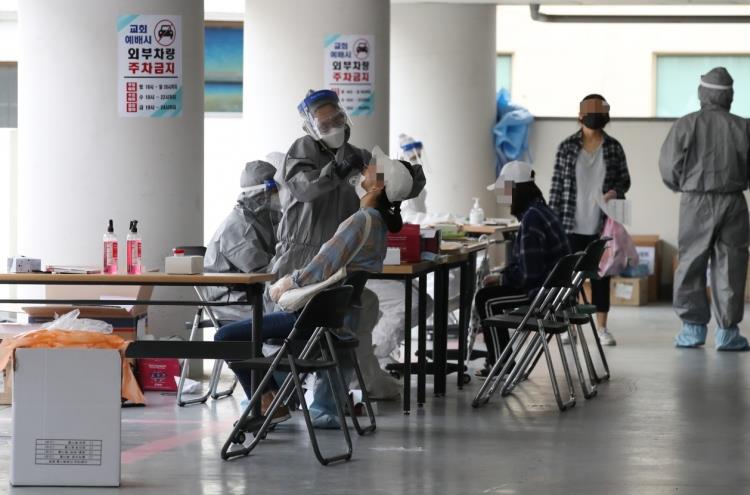SEOUL, Nov. 24 (Xinhua) -- South Korea will raise its social-distancing rules to the third-highest level for two weeks from Tuesday through Dec. 7 in the Seoul metropolitan area amid the soaring COVID-19 cases in the capital area.
The country's five-tier social-distancing regulations will be lifted to Level 2 in Seoul and its surrounding Gyeonggi province for two weeks, according to the health authorities.
The authorities tightened the quarantine rules from the lowest Level 1 to Level 1.5 on Nov. 19 in the metropolitan area, but the resurgence showed no sign of letup, leading to the tougher social-distancing guidelines.
In the latest tally, South Korea reported 349 more cases of COVID-19 for the past 24 hours, raising the total number of infections to 31,353. The daily caseload grew in triple digits for 17 days running.
The daily average number of confirmed cases was 83 between Nov. 8 and 14, but it soared to 175.1 between Nov. 15 and 21.
Under the Level 2 distancing, stricter restrictions are imposed on the operation of high-risk facilities, while gatherings are limited.
Five entertainment facilities, including nightclubs, have to suspend business, and karaoke bars have to stop business after 9:00 p.m. local time.
Indoor dining is not allowed in coffee shops and cafes, with only delivery and takeout to be permitted.
Restaurants are allowed to serve food until 9:00 p.m., with only delivery and takeout to be available afterward.
Limited capacity and a two-meter distance between seats are placed at regular facilities, such as concert halls, movie theaters, indoor sports facility, private cram schools, internet cafes, study rooms, public bathhouses, wedding halls, funeral homes, hair salons, amusement park, department stores and discount outlets.
The gathering of over 100 people is banned, and the spectator capacity for sports events is restricted to 10 percent. Worship services in religious facilities are allowed to fill up to 20 percent of seats.
The attendance cap in kindergartens, primary schools and middle schools is placed at one-third of the total students, while the cap in high schools is placed at two-thirds of students.
